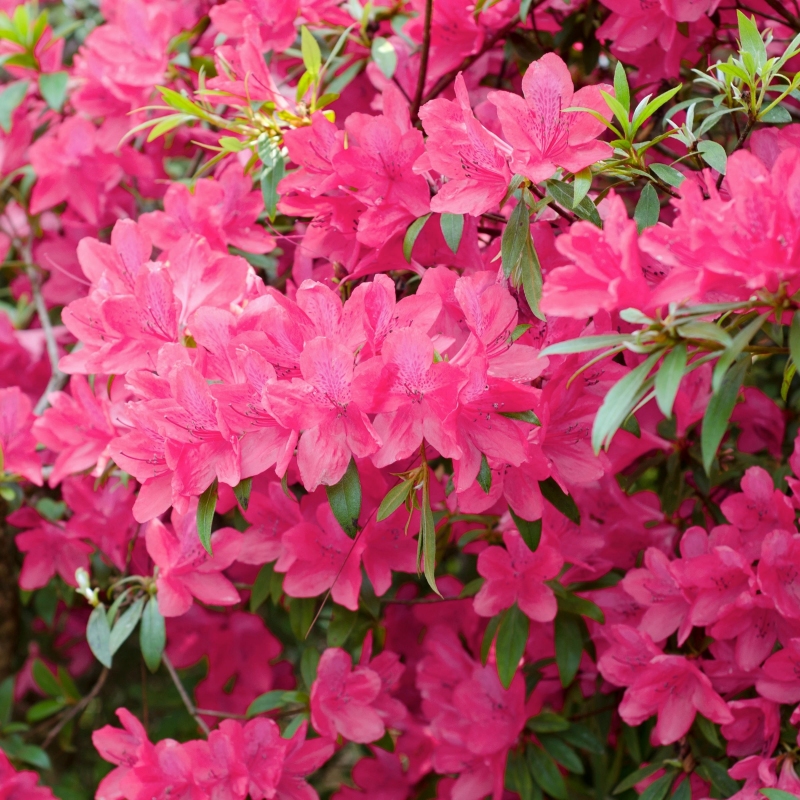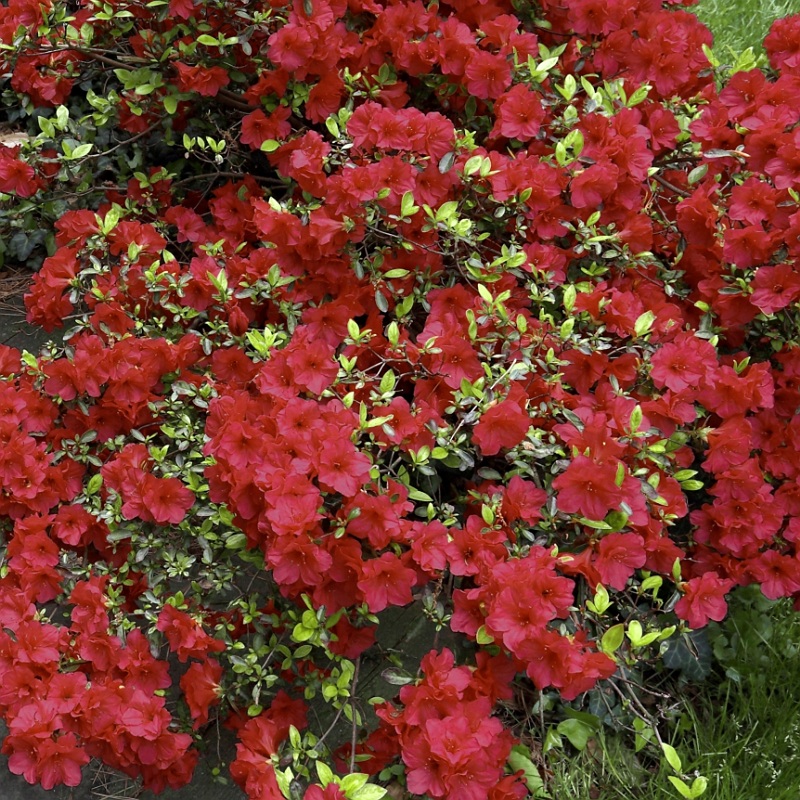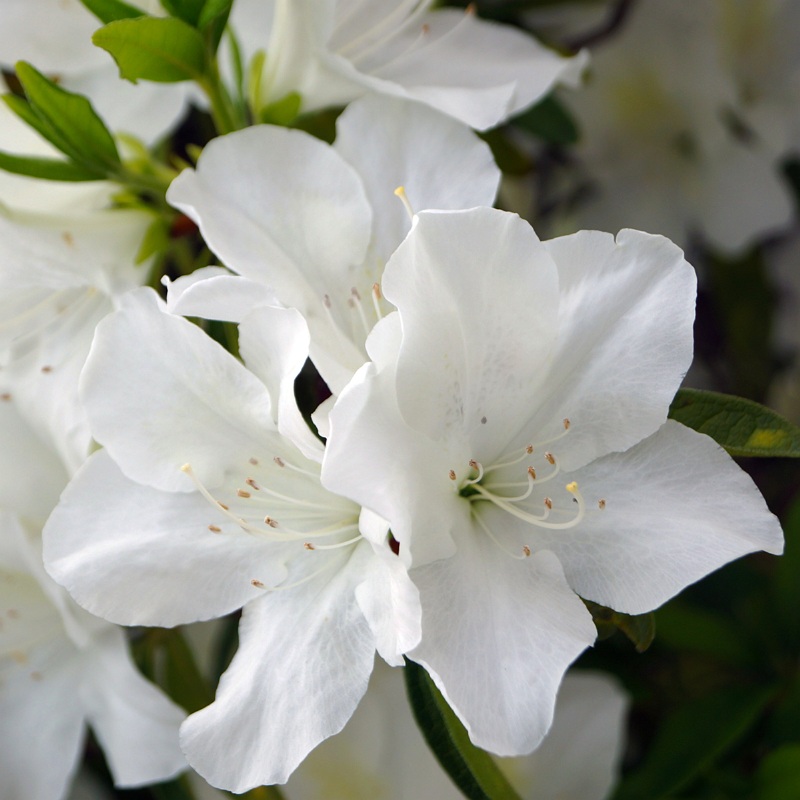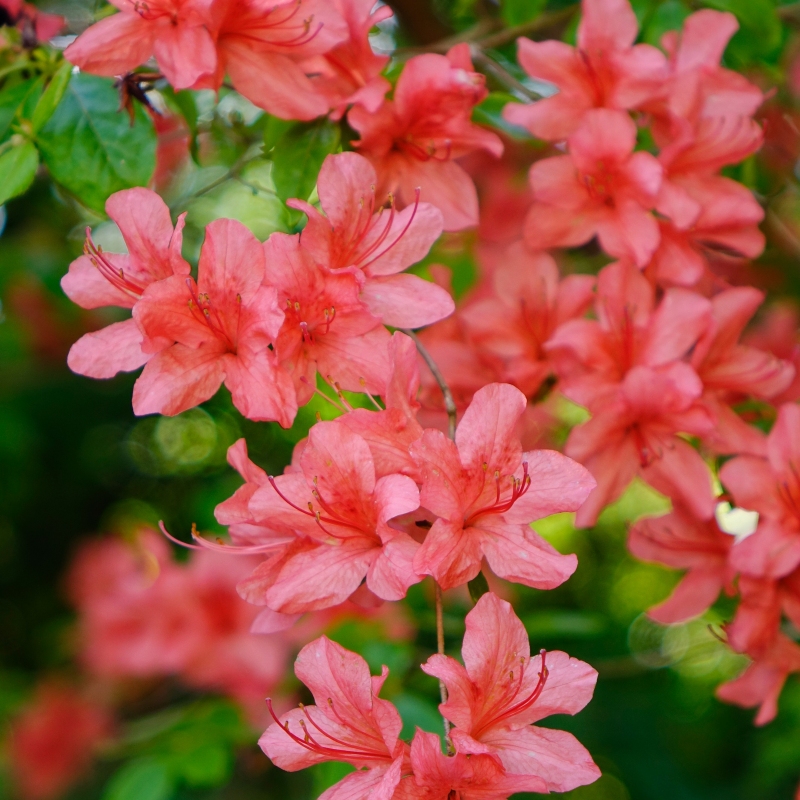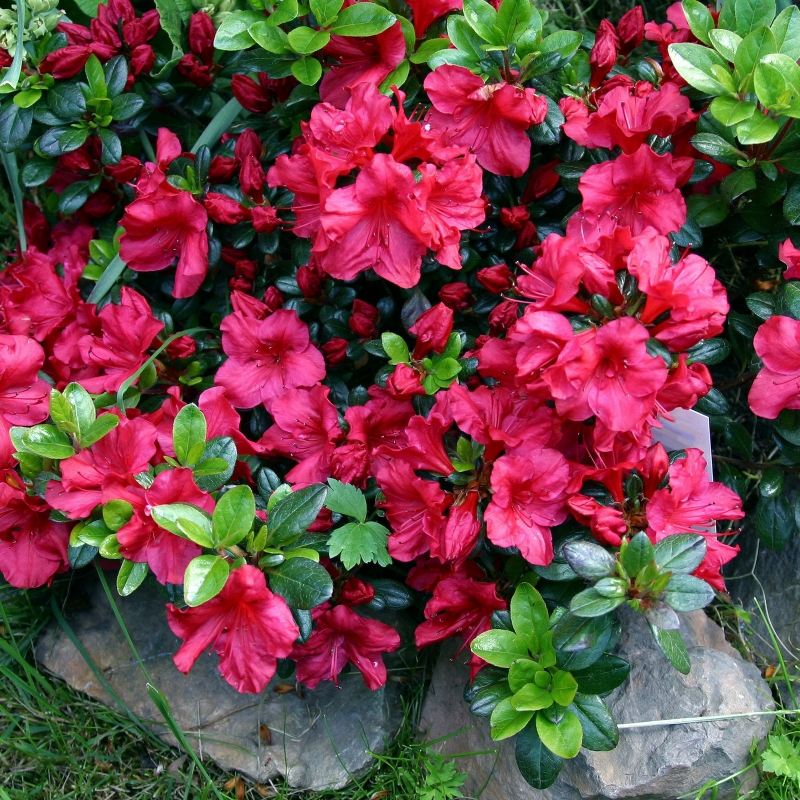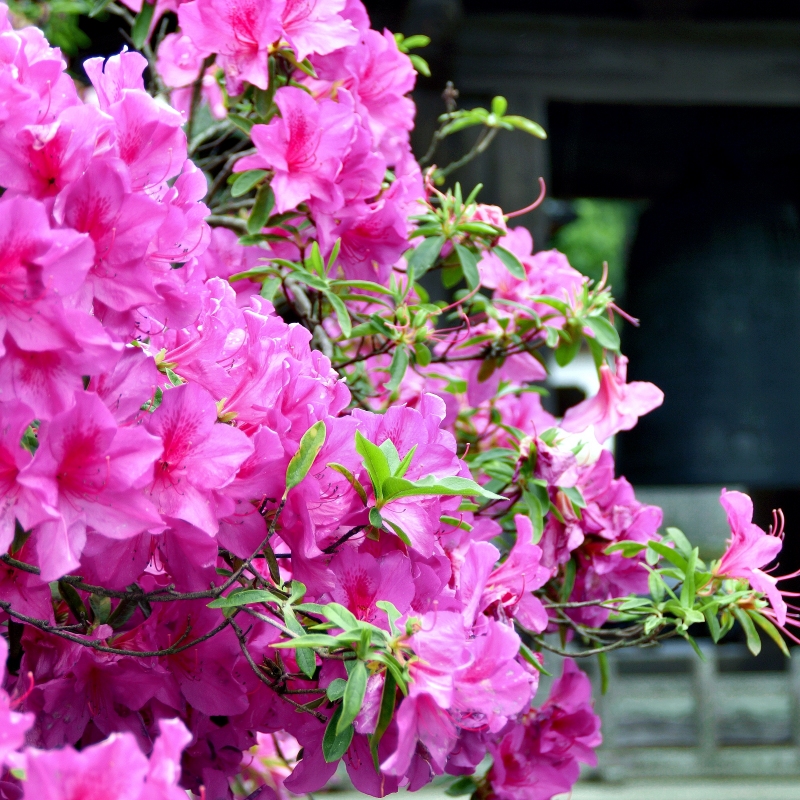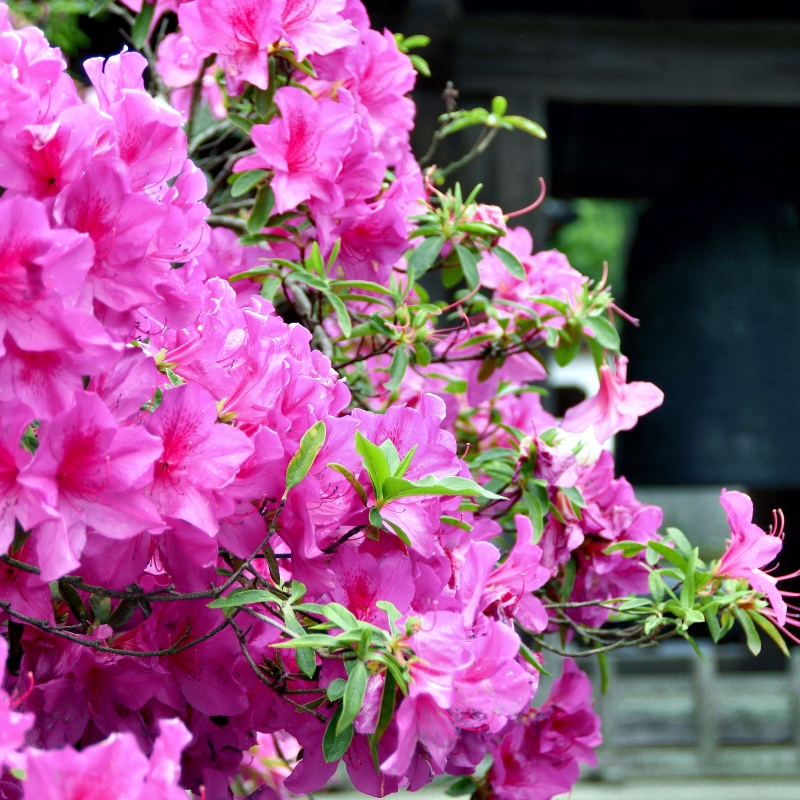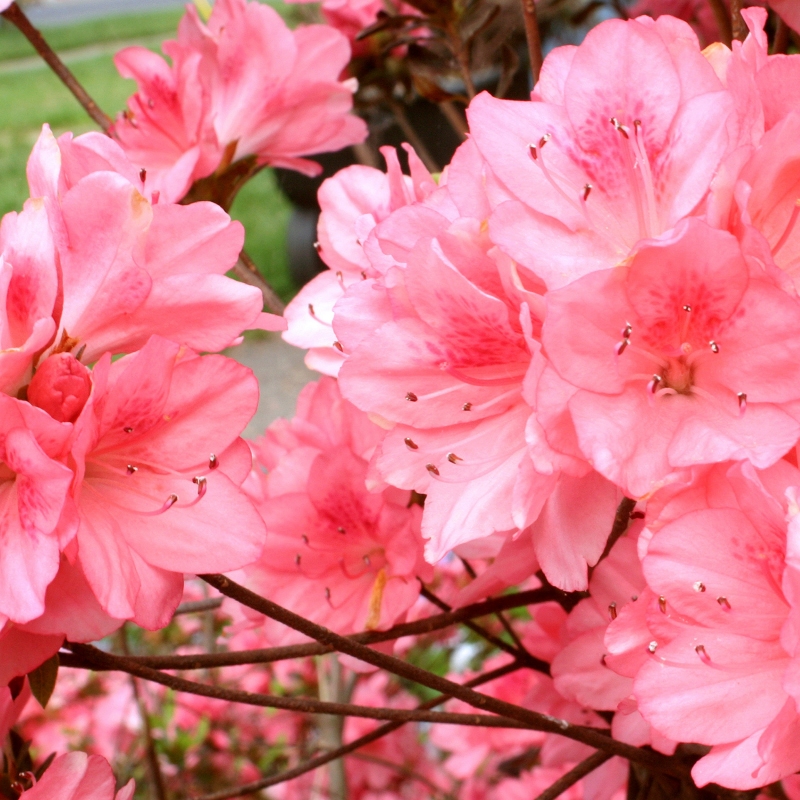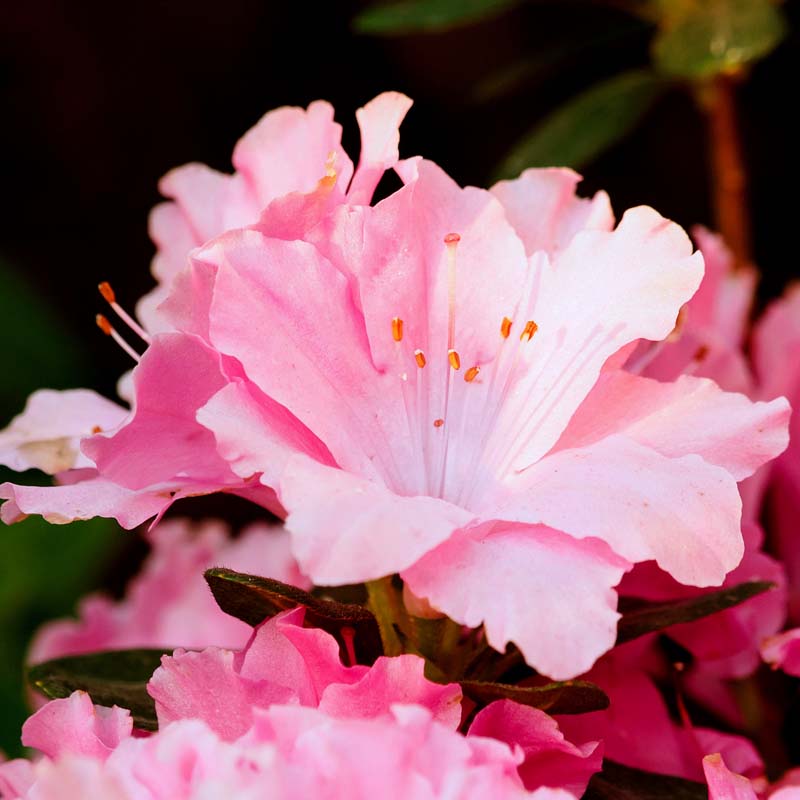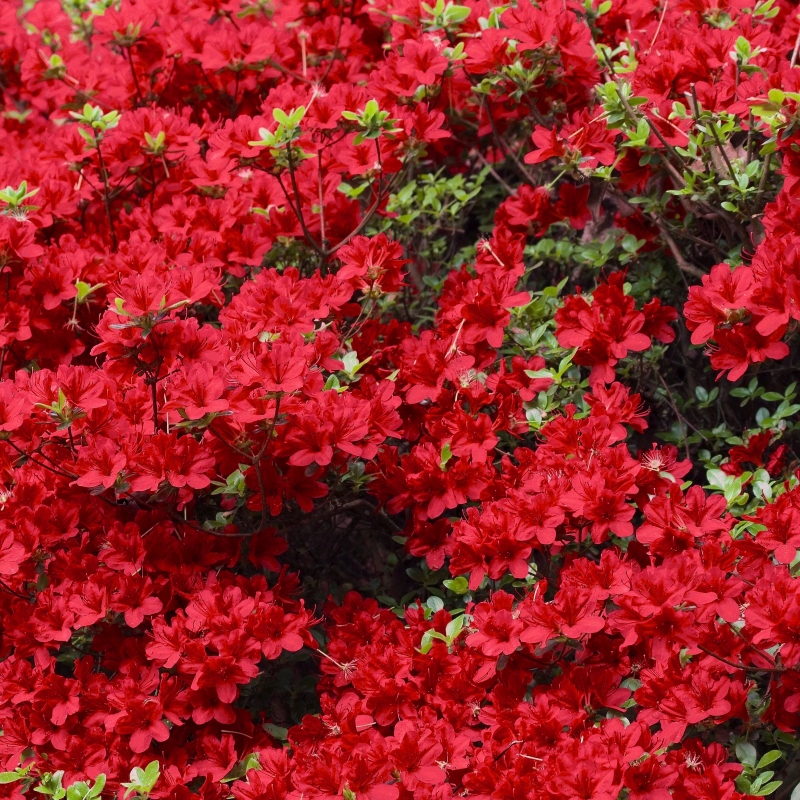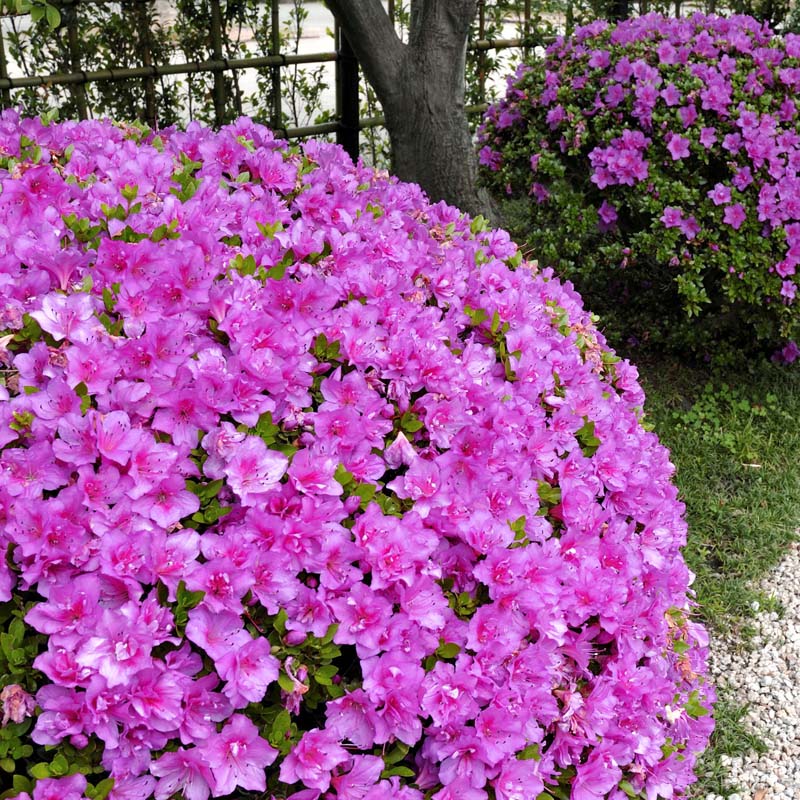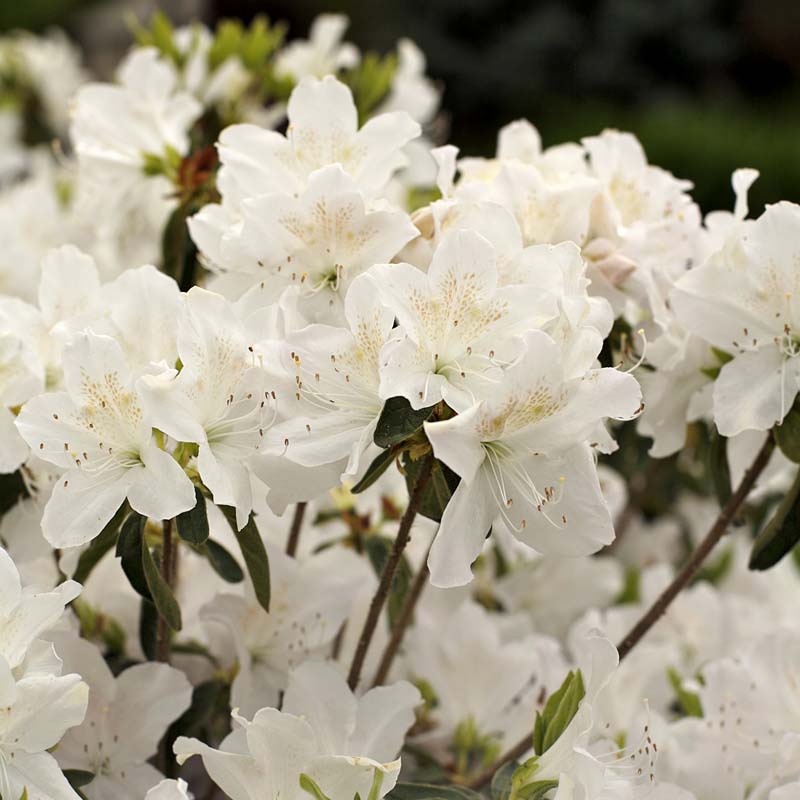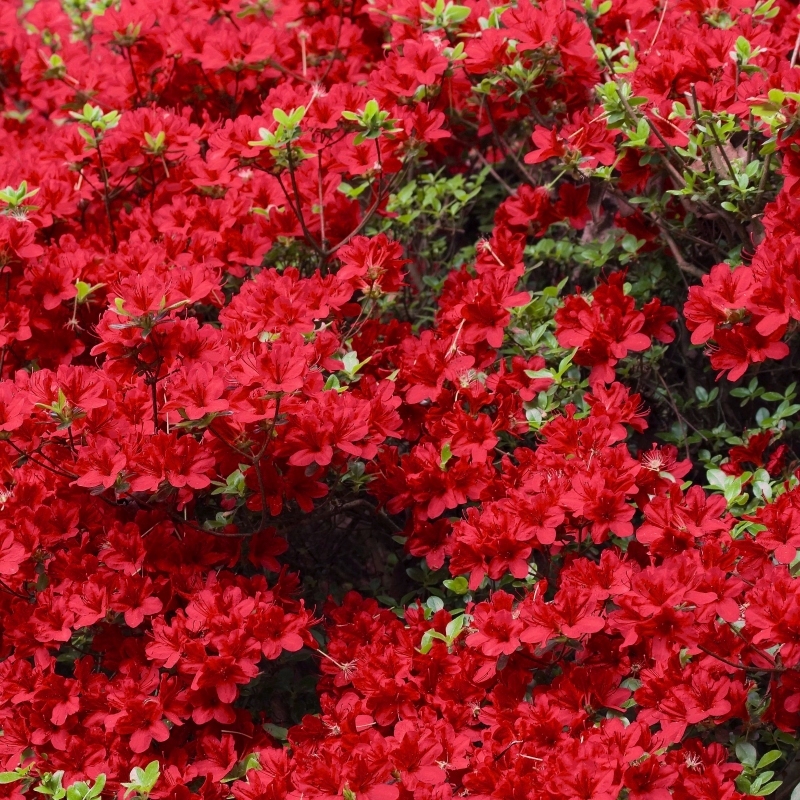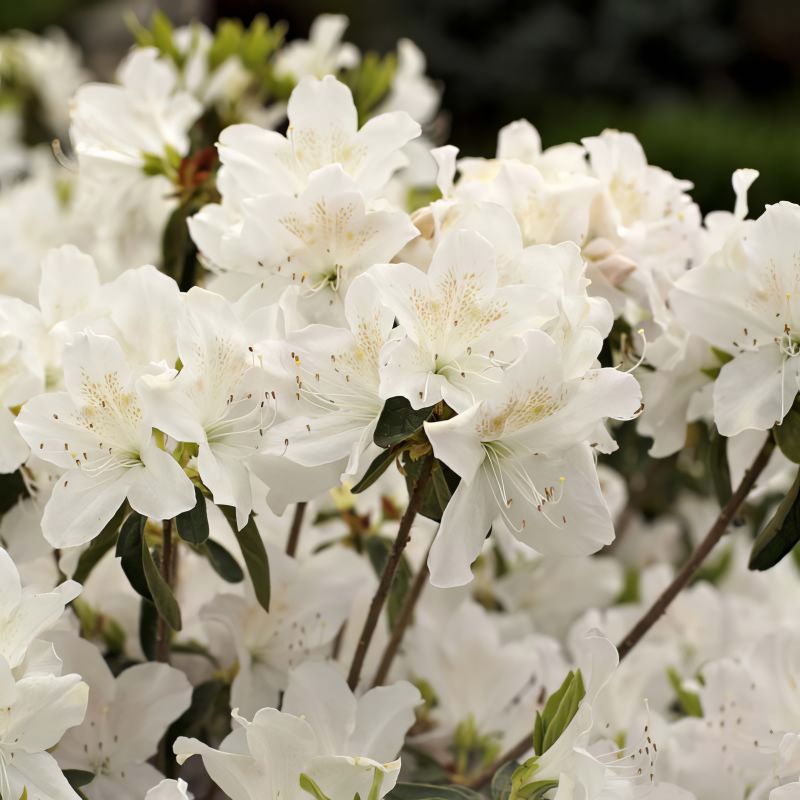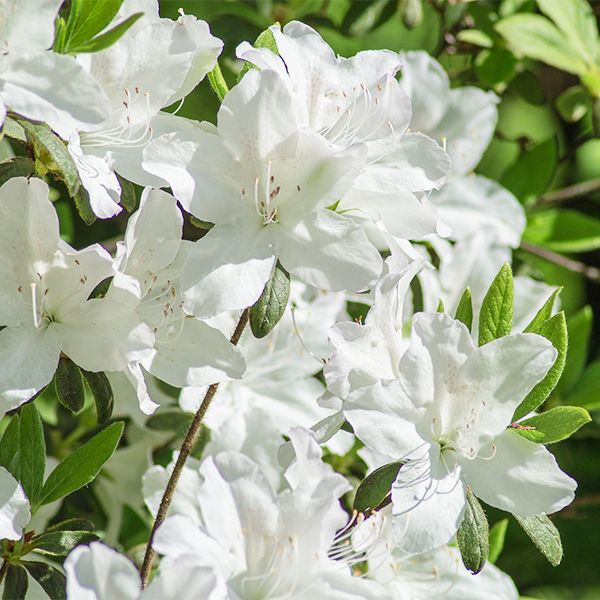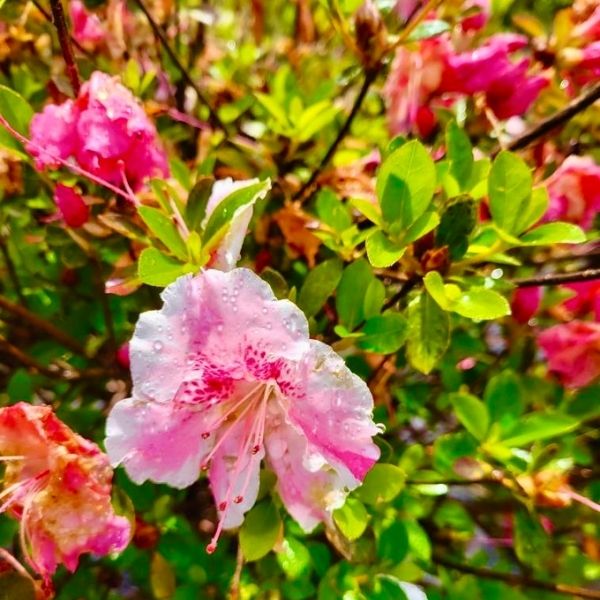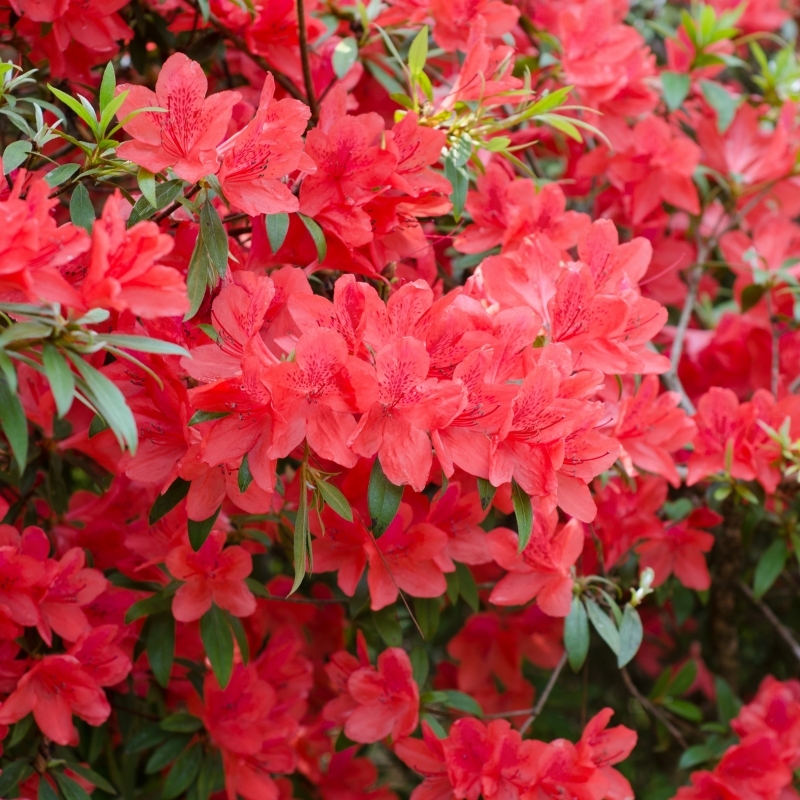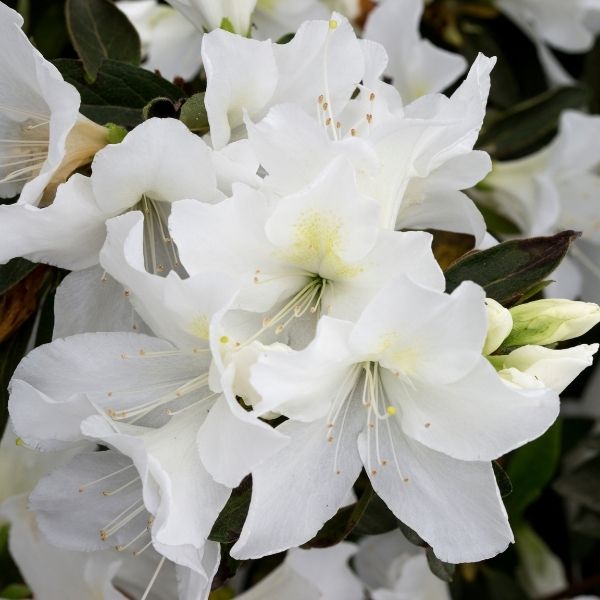
Alaska Azalea
Rhododendron indica 'Alaska'
8 reviews
Alaska Azalea
Rhododendron indica 'Alaska'
8 reviews
- Thrives in cooler climates
- Beautiful and vibrant blooms
- Adaptable to various soil types
- Recommended by landscape designers for optimal fit in real yards
$149.00
$213.00
30% Off
- Ships to 43215 in 3 to 7 days
- Free Shipping Over $150
- Plant Arrival Guarantee
- In Stock
- Free Plant Consult
$200 - Landscape-Approved: Every Plant We Sell Comes With Design Expertise Behind It
3.5 Gallon
Not just beautiful - intentionally selected by ShrubHub's 3D landscape design team to fit real-world spaces and maximize yard potential.
Why Alaska Azalea?
Alaska Azalea is a popular shrub known for its white, fragrant blooms that bloom in late spring or early summer. It's a low-maintenance plant that thrives in partial shade and acidic soil, making it ideal for gardens in coastal areas. It also attracts hummingbirds and butterflies, making it an excellent addition to any garden!
People who loved this plant also bought
Sunlight
The Alaska Azalea (Rhododendron canadense) requires full to partial sunlight, ideally receiving 4 to 6 hours of direct sunlight daily. It can tolerate some shade, but insufficient sunlight may hinder its growth and blooming potential.
Watering
The watering requirement for Alaska Azalea is regular and consistent watering, aiming to keep the soil moist but not waterlogged. It is important to avoid both overwatering and allowing the plant to dry out completely.
Fertilizing
Alaska Azalea requires acidic soil with a pH between 4.5 and 6.0. It benefits from a slow-release, acid-forming fertilizer specifically formulated for Azaleas and Rhododendrons, applied in early spring and again in late summer.
The Alaska Azalea is a truly enchanting addition to any garden that will instantly elevate the beauty and elegance of your outdoor space. Flourishing in cooler climates, this exquisite azalea thrives in USDA Zones 3-7.
The Alaska Azalea is renowned for its delicate and impeccable white blooms. This variety of azalea produces many stunning flowers that create a captivating visual spectacle. As the blossoms unfurl, they reveal layers of soft, pristine white petals, exuding an aura of purity and grace. The Alaska Azalea's timeless beauty adds a touch of elegance and sophistication to any landscape.
When it comes to the soil type, the Alaska Azalea appreciates well-drained acidic soil. This makes it an excellent choice for gardens where these conditions are naturally present or can be easily replicated. Its preference for acidic soil ensures that it receives optimal nutrition and enables the azalea to flourish at its full potential.
The Alaska Azalea's versatility in landscape design is another appealing aspect. Whether utilized as a focal point in the garden or planted in mass groupings, this azalea creates a breathtaking display, making it a standout feature in any outdoor setting. Its white blooms stand out against the lush green foliage, creating a visually striking contrast that is sure to command attention.
One of the notable characteristics of the Alaska Azalea is its ability to attract beneficial pollinators. Butterflies and bees are drawn to the abundant and fragrant blossoms, bringing life and movement to your garden. These pollinators play a vital role in the ecosystem, aiding in the reproduction and vitality of plants.
Choose the Alaska Azalea to add a touch of elegance and sophistication to your landscape. Transform your outdoor space into a haven of beauty and tranquility with this enchanting flowering plant.
Plant Information:
| Botanical Name: | Rhododendron indica 'Alaska' |
| USDA Zones: | 9 - 11 |
| Water: | Moderate |
| Exposure: | Full Sun |
| Soil Needs: | Well Drained |
| Mature Height: | 3 - 5 feet |
| Mature Spread: | 4 - 6 feet |



Pollination Info
Pollination Information for Alaska Azalea (Rhododendron indica 'Alaska')
Alaska Azalea (Rhododendron indica 'Alaska') is a popular ornamental shrub that produces beautiful white flowers with pink specks. The flowers are highly attractive to bees and other pollinators, which play a critical role in the plant's reproduction.
Alaska Azalea has a unique pollination mechanism that enhances its chances of successful reproduction. The plant is self-incompatible, meaning that it cannot produce viable seeds by fertilizing its own flowers. Instead, it relies on cross-pollination by insects and other animals to transfer pollen between flowers from different plants and produce viable seeds.
The main pollinators of Alaska Azalea are bees, particularly bumblebees and honeybees. These insects are attracted to the plant's nectar and pollen, which they collect and use for food. As they move from flower to flower, they transfer pollen from the male reproductive organs (stamens) to the female reproductive organs (pistils), facilitating fertilization and seed production.
Other important pollinators of Alaska Azalea include butterflies, moths, and hummingbirds. These animals are less common but still play a significant role in pollinating the plant.
To ensure successful pollination of Alaska Azalea, it is important to plant multiple individuals within close proximity. This increases the chances of cross-pollination and seed production. It is also important to avoid using insecticides and other pesticides that can harm pollinators.
FAQ
Alaska Azalea (Rhododendron indica 'Alaska') FAQ
What is an Alaska Azalea?
The Alaska Azalea, or Rhododendron indica 'Alaska', is a flowering evergreen shrub that is native to the Himalayas. It is a popular plant for gardens due to its showy white blooms that appear in the spring.
How big does an Alaska Azalea grow?
The Alaska Azalea typically grows to be 4-6 feet tall and about as wide. However, it can be pruned to maintain a smaller size if desired.
What are the growing conditions for an Alaska Azalea?
The Alaska Azalea prefers moist, well-drained soil that is slightly acidic. It also prefers partial shade, as too much sun can damage the delicate flowers. It can be grown in zones 6-8.
When does an Alaska Azalea bloom?
The Alaska Azalea typically blooms in the spring, around late April or early May. The showy white blooms will last for a few weeks before gradually fading.
How do I care for an Alaska Azalea?
An Alaska Azalea requires regular watering, especially during hot or dry weather. It also benefits from occasional fertilization, using an acidic fertilizer designed for azaleas. Pruning is also recommended after the plant has finished blooming, to help maintain a desired shape or size.
Are there any pests or diseases that affect the Alaska Azalea?
The Alaska Azalea is susceptible to a few pests and diseases, including lace bugs, spider mites, and root rot. Regular inspection and treatment can help prevent infestations or infections.
Can the Alaska Azalea be grown in a container?
Yes, the Alaska Azalea can be grown in a container as long as it is given proper care, such as regular watering and fertilization. It should be repotted into a larger container every few years.
Can an Alaska Azalea be used for landscaping?
Yes, the Alaska Azalea is a popular plant for landscaping due to its showy blooms and evergreen foliage. It can be used as a focal point in a garden or as part of a mixed border.
How do I propagate an Alaska Azalea?
An Alaska Azalea can be propagated through stem cuttings, layering, or grafting. It is best to propagate in early summer, after the plant has finished blooming.
Planting & Care
Planting and Care for Alaska Azalea
Planting
- Choose a planting site that receives partial to full shade.
- Ensure the soil is acidic (pH of 4.5 to 5.5) and well-draining.
- Dig a hole twice as wide and slightly deeper than the root ball of the plant.
- Place the plant in the hole and fill it halfway with soil, then water well.
- Finish filling the hole with soil, tamping it down firmly, and water again.
- Add a layer of mulch around the base of the plant to retain moisture and suppress weeds.
Care
- Water regularly, keeping the soil evenly moist but not waterlogged.
- Fertilize with an acidic fertilizer in early spring before new growth appears.
- Prune after flowering to shape the plant and remove any dead or damaged wood.
- Cover the plant in winter with burlap or a protective cover to prevent damage from harsh winds and freezing temperatures.
Pests and Diseases
The Alaska Azalea is susceptible to several pests and diseases, including lace bugs, spider mites, petal blight, and root rot. Regular monitoring and appropriate treatment, such as insecticidal soap or fungicide, can help prevent or manage these issues.
Check Out These Verified Customer Reviews:
Customer Reviews
4.5 out of 5 based on 8 reviews
Thank you! Your review has been submitted.
I ordered the Alaska Azalea and I am beyond impressed! The plant arrived in perfect condition and bloomed beautifully. The website was easy to navigate and the shipment was quick. Overall, great customer service!
The website was easy to navigate and placing my order was a breeze. I received timely updates on my shipment.
I was pleasantly surprised by the high quality of the Alaska Azalea plant. It arrived well-packaged and healthy.
Item has been added to your cart.



